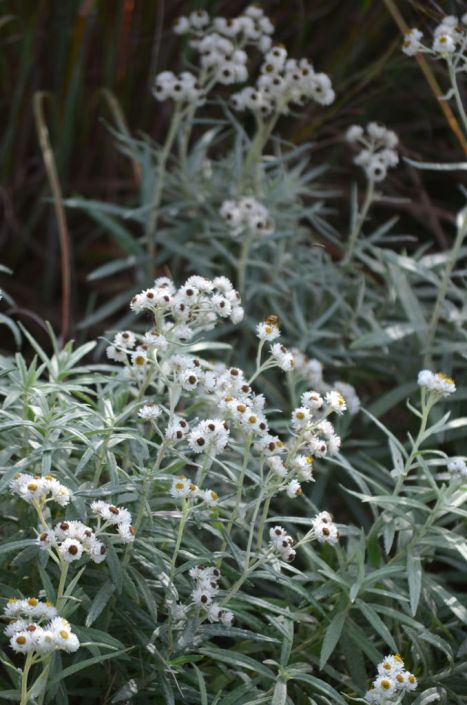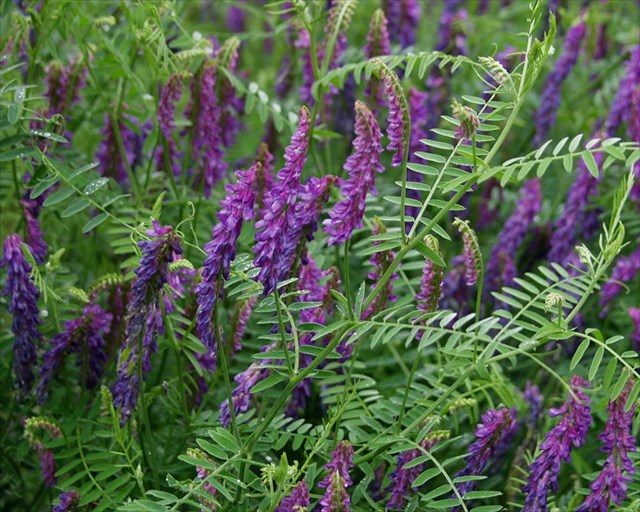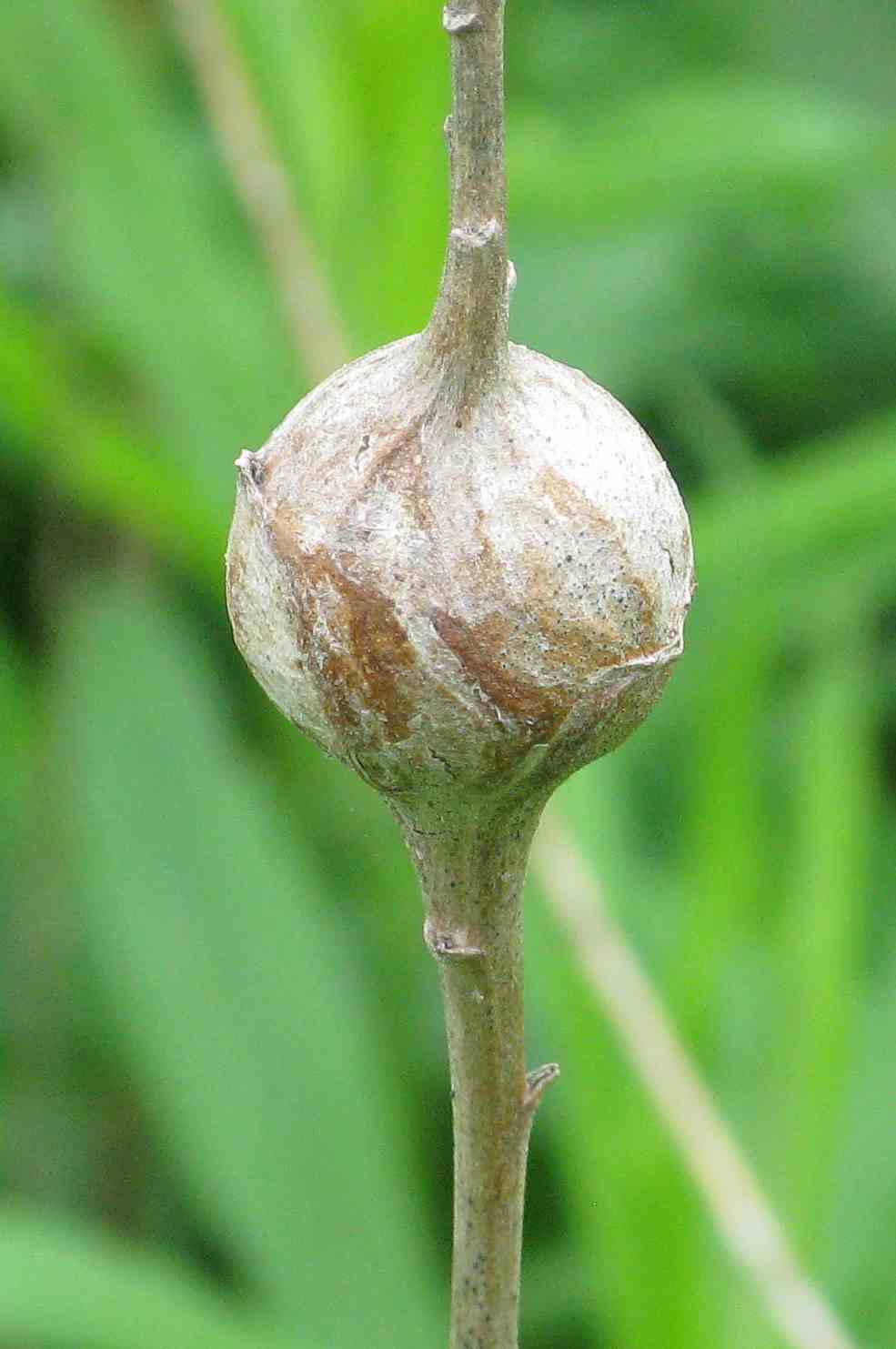Jay, Maine
North Jay White Granite Park

Today was the 4th walk of our Second Sunday Nature Walks. We met at North Jay Granite Park for an easy, one mile walk that meanders through what was once a working apple orchard. Apple trees can still be seen along the trail as well as old farm equipment.
Seven eager nature enthusiasts joined us. After introductions all around, we learned a little about the quarry, how long it has been there and if it was still active, and yes it is! We were surprised to learn that one million paving blocks were made every year while it was in production in the early 1900’s. The quarry reopened several years ago and because it is active, the one trail that overlooks the quarry is now closed.
As we started our walk, Anthony pointed out the “din” to us. What was that constant noise?
At the beginning of the walk we saw and identified a Grey Catbird and maybe a Barn Swallow .

Anthony explained that they were caused by the goldenrod gall fly ( (Eurosta solidaginis) that emerges in the spring. He also mentioned two other goldenrod galls, one made also on the stem by a moth which tends to be more elliptical in shape, and a goldenrod flower gall, made by a midge.
This walk included a lot of bugs, Anthony’s favorite topic! We checked out a Fall Webworm  on a bush that had some small caterpillars in it. We saw a few moths fluttering in the grassy field and our nature walkers wanted to know how to tell a butterfly from a moth. We learned that butterflies have long, thin antennas, while moths have more or less feathery antennas.
on a bush that had some small caterpillars in it. We saw a few moths fluttering in the grassy field and our nature walkers wanted to know how to tell a butterfly from a moth. We learned that butterflies have long, thin antennas, while moths have more or less feathery antennas.
 on a bush that had some small caterpillars in it. We saw a few moths fluttering in the grassy field and our nature walkers wanted to know how to tell a butterfly from a moth. We learned that butterflies have long, thin antennas, while moths have more or less feathery antennas.
on a bush that had some small caterpillars in it. We saw a few moths fluttering in the grassy field and our nature walkers wanted to know how to tell a butterfly from a moth. We learned that butterflies have long, thin antennas, while moths have more or less feathery antennas.
with its fruits. We learned that it can be a slow grower and an understory tree which means it grows below taller trees in the forest. I did not know that! It is called Hophornbeam because the fruits that form papery clusters resembling the hops (made by another plant) used in brewing beer. It's related to birch trees and is in the family betulaceae. We all agreed that we would like to have a Hophornbeam tree in our yard!
We couldn't get far without seeing all of the amazing Milkweed plants (ascelepia syriaca), and yes, we took time to look for caterpillars. There were a lot of Monarch caterpillars! We even saw a few Red Milkweed Beetles Tetraopes tetraophthalmus whose name means four eyes. Anthony forgot to mention that if you look closely at their eyes, their antenna seem to bisect their eyes on both sides of their head.
On closer inspection of a tree we found other caterpillars to take a look at, including several of these critters! This caterpillar was probably a Polyphemus moth, who will turn into a giant silk moth.
 |
| The Pink Striped Oakworm Moth Anisota virginiensis |
 |
| Pine Sawfly Larva, possibly Diprion similis. |
 |
| Although many insect species create leaf mines this is probably a moth called the Aspen Leaf Miner Phyllocnistis populiella |
We continued on the path and it led us into the woods were we found more plants to enjoy. 



We discovered a bunch of fallen Yellow Birch (Betula alleghaniensis) catkins. We were able to see the seeds inside and the bracts left behind, looking like little bird's feet.
We saw several more wildflowers including Pearly Everlasting (Anaphalis margaritacea),
Cow Vetch (Vicia cracca) and one of my favorite wild flowers, Indian Cucumber Root (Medeola virginiana).
 |
| Pearly Everylasting |
 |
| Cow Vetch |
Indian Cucumber Root
Anthony was a good sport and showed us what he and his childhood friends did with the giant leaves of the Moose Maple (Acer pensylvanicum). They tucked the stem of the leaf under their shoe laces and walked around with duck feet. Interesting friends you had!

At the end of our walk we saw two varieties of Mushrooms.

|
We found a large Bolete, but it was to old to identify, but I was able to point out how the inside of the bolete turned blue when you pressed on it, one of the identifying features of Boletes.
Wow, we spotted a Lobster Mushroom (Hypomyces lactiflurum). This is one of my favorite edible mushrooms. This one was to old to pick, but when they are fresh and cut on a plate they are very white inside with the orange/red layer on the outside and yes, they do resemble lobster meat. Yum, they are delicious! Caution: only pick if you can identify it for yourself with 100% confidence!
 This was the last plant of the walk that we identified. The race was on to see who could identify it first with their field guide. Allen was the winner!
This was the last plant of the walk that we identified. The race was on to see who could identify it first with their field guide. Allen was the winner!It was a fun walk and we look forward to our next Second Sunday walk on September 8, 2016 at the Jay Recreation Trails.










No comments:
Post a Comment